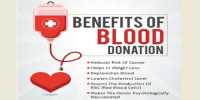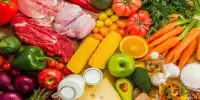The focus on food insecurity in inner cities has broadened to recognize that other groups may struggle to access healthy food. People in small towns and rural areas, for example, may have to travel long distances to supermarkets that have limited stock. Another group that is particularly vulnerable to food insecurity and diabetes is older adults, and diabetes is a major concern among older adults who rely on food banks. After all, it’s difficult to manage diabetes if you can’t afford the proper foods.
According to a Washington State University study, young adults who were at risk of food insecurity had a higher incidence of diabetes 10 years later. While previous research has associated food insecurity with a range of health issues including diabetes, obesity and hypertension, this study showed a connection over time, suggesting a causal relationship.
Researchers analyzed data from the National Longitudinal Study of Adolescent to Adult Health in the study, which was published in the Journal of Nutrition. They discovered that adults ages 24-32 who reported being concerned about food insecurity in the previous year had a higher incidence of diabetes, either through blood glucose tests or self-reports, at ages 32-42 than those who did not report food insecurity risk.
Eating according to dietary guidelines tends to cost more money and may take more time. It is not always accessible to households with limitations, such as transportation to sources of low-cost, nutrient-dense food.
Cassandra Nguyen
“When we look at the data 10 years later, we do see this separation in prevalence of diabetes: those that experienced risk of food insecurity at young adulthood are more likely to have diabetes in middle adulthood,” said Cassandra Nguyen, the study’s lead author and an assistant professor with WSU’s Institute for Research and Education to Advance Community Health or IREACH.
While the study could not pinpoint the exact cause of this link, previous research has shown that food-insecure households frequently consume diets with lower nutritional values.
“Eating according to dietary guidelines tends to cost more money and may take more time,” Nguyen explained. “It is not always accessible to households with limitations, such as transportation to sources of low-cost, nutrient-dense food.”
People experiencing food insecurity, according to Nguyen, can also become trapped in a negative reinforcing cycle, which occurs when food insecurity is associated with a diet that contributes to disease risk, which then creates additional health care expenses, straining a household’s economic resources and deepening food insecurity.

The study did not reveal differences among race or ethnicity, but the authors noted that the numbers of minorities in the sample may be too low to show a pattern.
The research team intends to investigate food insecurity risk and health issues among American Indian and Alaska Native populations in the future. These communities are frequently left out of annual reports on food insecurity, which means they may be overlooked when food assistance programs and policies are reformed. Nguyen recently led a review of 30 studies that discovered that food insecurity estimates in Native populations varied widely, but even the lowest estimate far outstrips the prevalence among non-Hispanic white adults.
Interventions such as the Supplemental Nutrition Assistance Program (SNAP) and its educational component SNAP-Ed and EFNEP, or the Expanded Food and Nutrition Education Program, have been shown to improve diet and health, according to Nguyen. However, in order to benefit from them, people must first be counted.
Fresh produce and proteins are frequently unavailable to older adults on a fixed income or those with mobility issues. Food boxes, for example, are frequently high in carbohydrates, with low-cost items such as juice, pasta, and white rice being standard. Access to the right kinds of food isn’t the only problem. Cooking from scratch can be just as difficult. Many seniors are unable to stand, and arthritis can make chopping difficult. Because of this, older adults often depend on sandwiches, canned soups or meals they can microwave.
“It’s really important to ensure that individuals who are experiencing food insecurity are able to be identified and that they have resources made available to them to be able to break the cycle,” she said.















